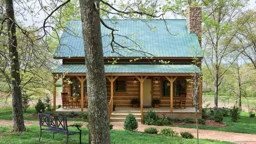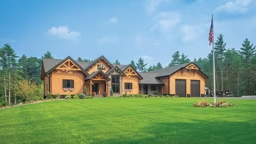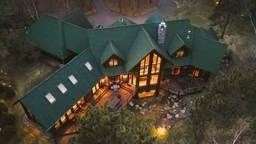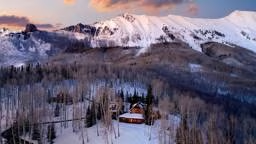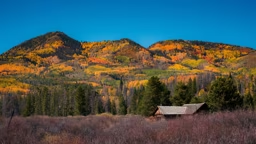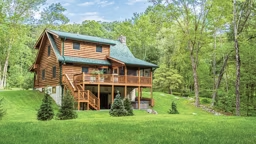
Photo credit: National Park Service
“Four-eyed dude” was how the West greeted Theodore Roosevelt when the Knickerbocker gent showed up in the Dakota Badlands to shoot bison. Intending only a brief vacation, the slight and sickly young man fell in love with the rugged territory and wound up ranching there, building up his body and self-reliance. By the time he left, his grit and grin had won over the cowboys and toughened him for the rough and tumble world of politics. “I would not have been president,” Roosevelt declared later, “had it not been for my experience in North Dakota.”
A big part of that experience was living in a log home. Built during the winter of 1883-84, his 400-square-foot cabin featured ponderosa pine logs that had been cut and floated down the Little Missouri River. Originally located eight miles south of Medora, in the river’s wooded bottomland, it was known as the Maltese Cross Cabin because it was part of Roosevelt’s Maltese Cross Ranch, named for the shape of its brand.
The hewn-log cabin boasted three separate rooms: kitchen, living room and Roosevelt’s bedroom. His favorite spot was the porch, furnished with his rocking chair. Other features included wooden floors, two doors, several glass-paned windows, mortar for chinking and a high-pitched shingled roof that provided an extra half-story, which he used for storage and as a spillover sleeping loft for ranch hands. Roosevelt spent many hours at the desk in the cabin’s living room recording his reminiscences. There, he wrote Hunting Trips of a Ranchman.
See also Why Cheap Land Doesn't Mean an Inexpensive Build
He built his second ranch, the Elkhorn, about 35 miles north of Medora. Its eight-room house was made of hewn logs, some from trees Roosevelt felled. He helped stack the walls in below-zero temperatures.
Roosevelt continued ranching until fall 1886, when he returned to New York to campaign for mayor. He lost, but his cowboy days later inspired him to organize the Rough Riders, which earned him fame during the Spanish-American War and advanced his political aspirations. The conservation program he developed as president reflected his experiences in the West, where he became keenly aware of the need to protect America’s natural resources. “It is in the West,” he told a reporter in 1896, “that as a nation we shall ultimately work out our highest destiny.”
See also 5 Reasons to Buy Reclaimed Hardwood
The Maltese Cross Cabin, which local cowboy Jack Snyder bought in 1899, is the only surviving building from Roosevelt’s two North Dakota ranches. During his presidency, it was exhibited in Portland, Oregon, and St. Louis, Missouri, then moved to the state capitol grounds in Bismarck. In 1959, the cabin was relocated to its present site in Theodore Roosevelt National Park and renovated. The most recent preservation work occurred in 2000.
Rising from dude to doer (e.g., “a man, a plan, a canal, Panama”), America’s 26th president earned his place on Mount Rushmore. Despite being born in a New York City brownstone, thanks to his Dakota days, rough-riding, trust-busting, wilderness-saving, bully-bullmoosing Teddy Roosevelt was a log-cabin president all the way.




